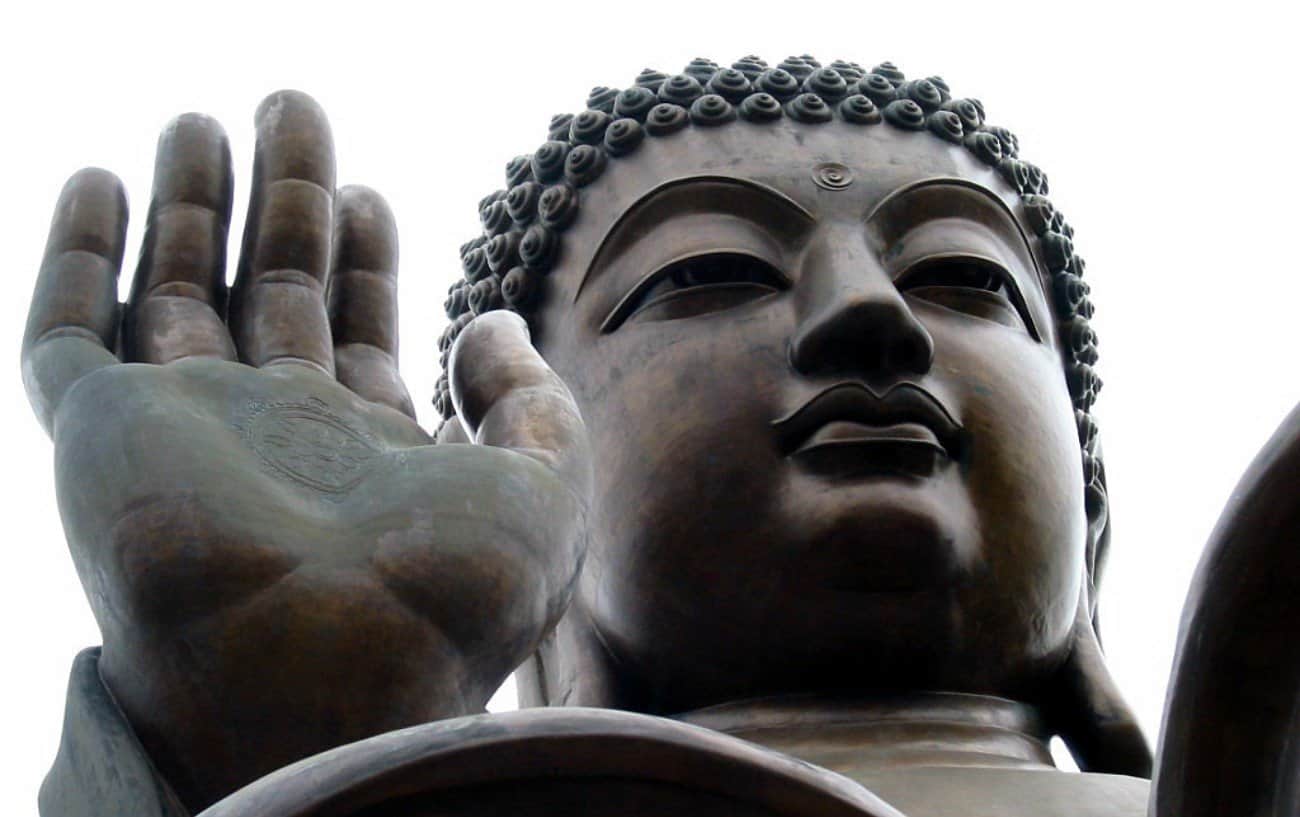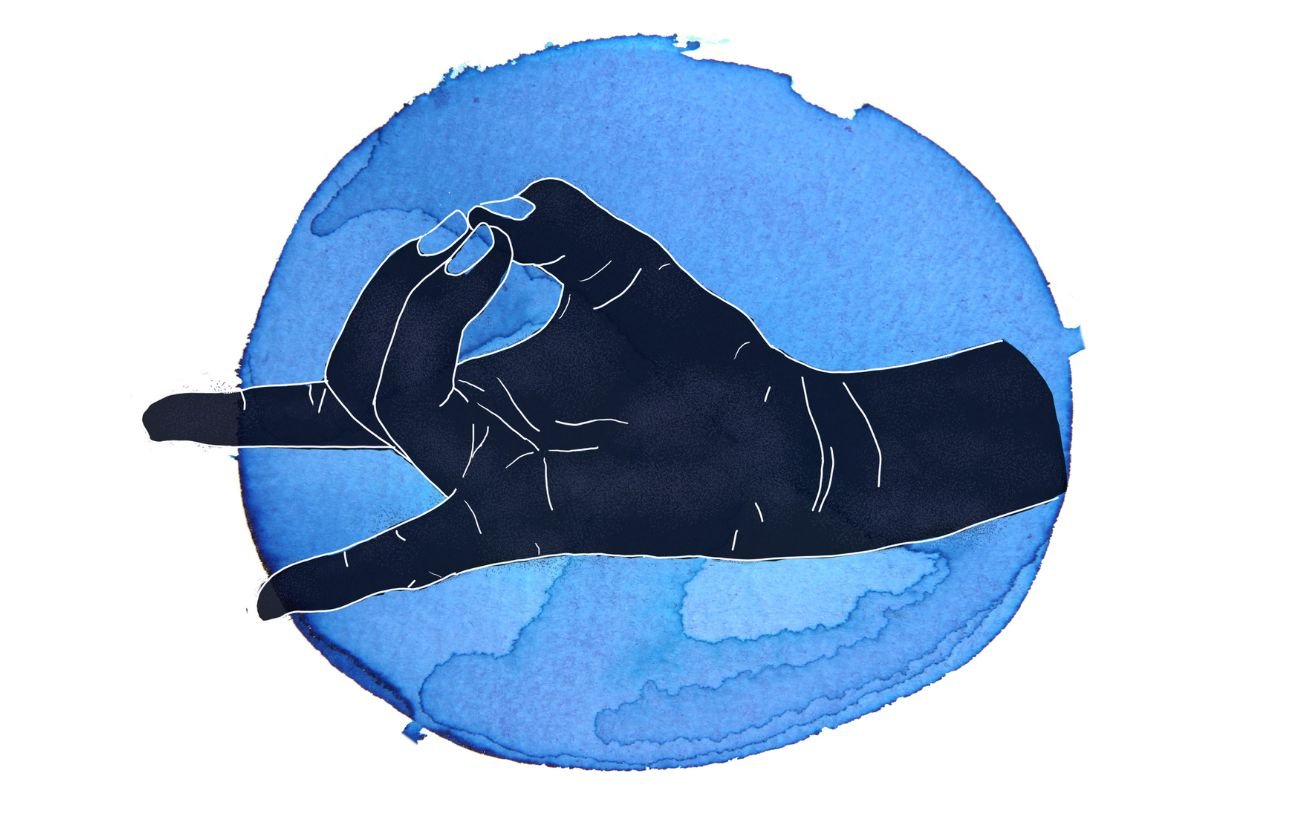अभयमुद्रा
Abhaya (fearlessness) + Mudra (seal, sacred gesture)
Alternate Names: Abhayamudra, Abhayamudrā, Abhaya-Mudra
Abhaya Mudra Definition
Abhaya Mudra is a hand gesture or sacred ‘seal’ which is used to channel the flow of prana, or vital life force, during meditation and yoga.
This gesture is a hasta mudra, meaning that it is a seal performed with the hands. It is most often practiced with the right hand at shoulder height with an open palm facing forward and the fingers joined and pointing upwards.
Abhayamudra is a gesture of reassurance and courage, as highlighted by its namesake ‘Abhaya’, translated from Sanskrit to mean ‘fearlessness’. The Hindu god Nataraja is depicted with his second right hand in Abhaya Mudra, bestowing divine protection from ignorance and evil to those who follow the righteous path of dharma.
Abhaya Mudra can be used during times of turmoil and challenge to call upon peace, divine protection, safety, and fearlessness.
The origins of Abhaya Mudra date back thousands of years with the mudra being one of the first to be depicted in various Hindu, Sikh, Buddhist, and Jain images.

Abhaya Mudra deep dive
The Abhaya Mudra is famously linked to the Gautama Buddha. It is said that this mudra was the first used by the Buddha after reaching enlightenment.
The Gautama Buddha is also depicted using the Abhaya Mudra to subdue a drunk elephant that was unleashed to attack him. And on another occasion, the Buddha is depicted raising both hands in Abhaya Mudra to prevent a flood. Thus the double Abhaya Mudra is often referred to as a gesture of ‘calming the ocean’.
This mudra is most often performed using only the right hand. However, in Thailand and Laos, the Abhaya Mudra is associated with the Walking Buddha who is depicted performing the mudra with both hands.In Mahayana Buddhism, the Abhaya Mudra is often gestured in conjunction with another mudra in the left hand.
Whilst in Japanese Shingon Buddhism, the Abhaya Mudra is often performed with the middle finger slightly pushed forwards.
However, the Abhaya Mudra is said to predate Buddhism. As a declaration of being without a weapon in hand, it was used as a gesture of good intentions and friendship when approaching strangers.

Abhaya In Your Life
The Abhayamudra can be used in Sukhasana (easy pose), Padmasana (lotus pose), or Virasana (hero pose), during meditation in order to channel fearlessness, protection, and peace.
You can also practice Abhaya Mudra during Virabhadrasana II (warrior II) with the forward reaching hand turned upward in Abhaya Mudra to channel strength and courage.
Harness the power of Abhaya Mudra to overcome fears and limiting thoughts and to become your own protector.

To go deep and expand your yogic knowledge, access our free Yoga Terms Encyclopedia, where we host a profound wealth of ancient and timeless yogic wisdom in an accessible modern format.












Great article. Abhaya and Varadha Mudras are Mudras of deity.